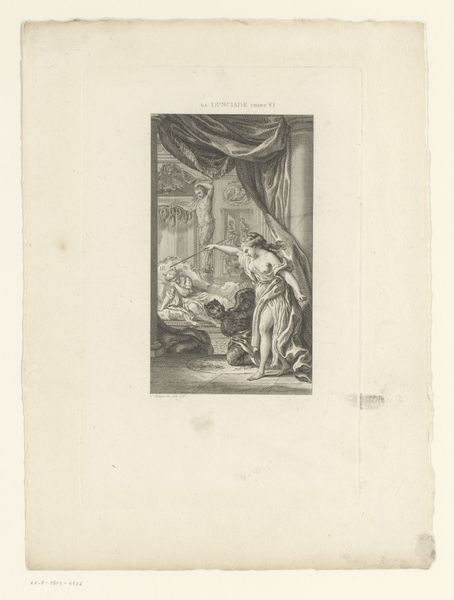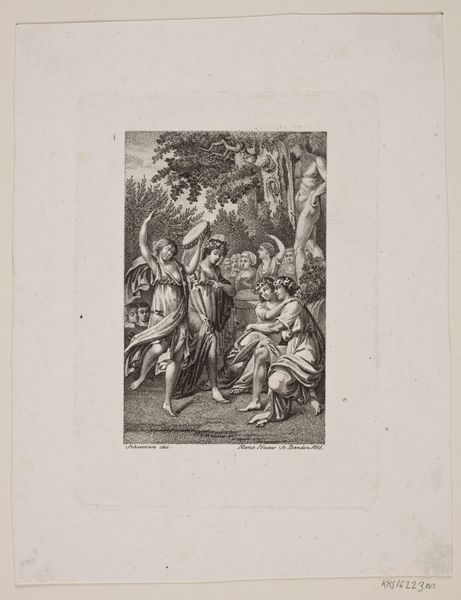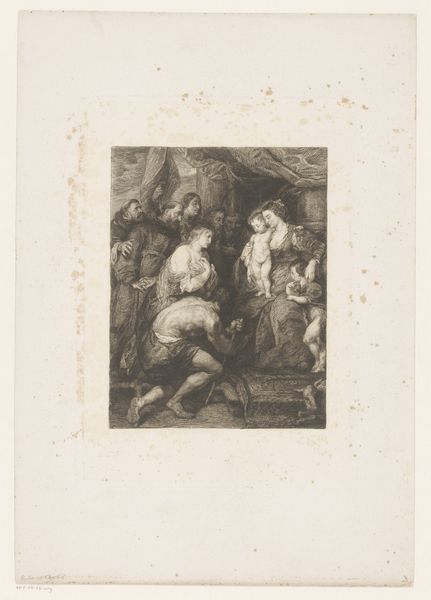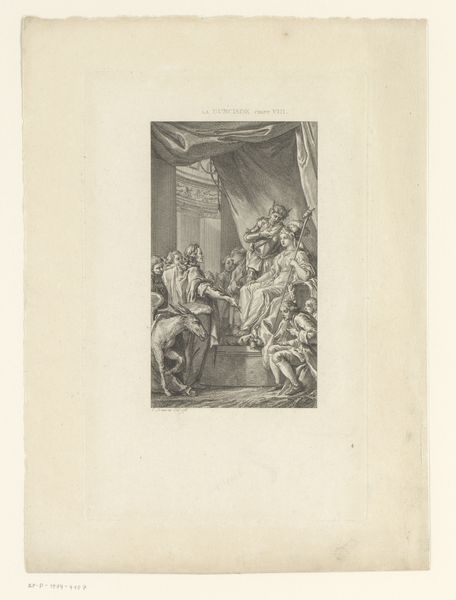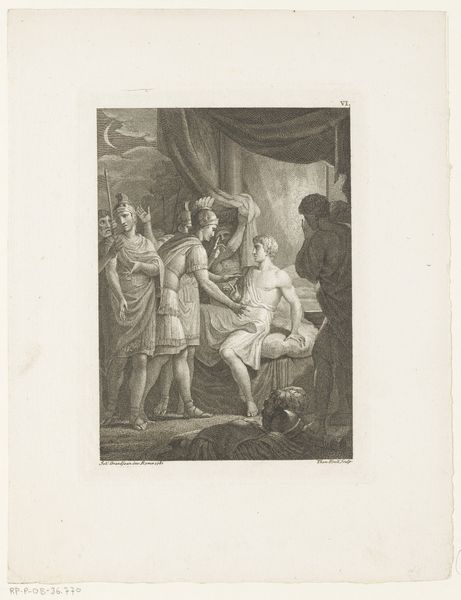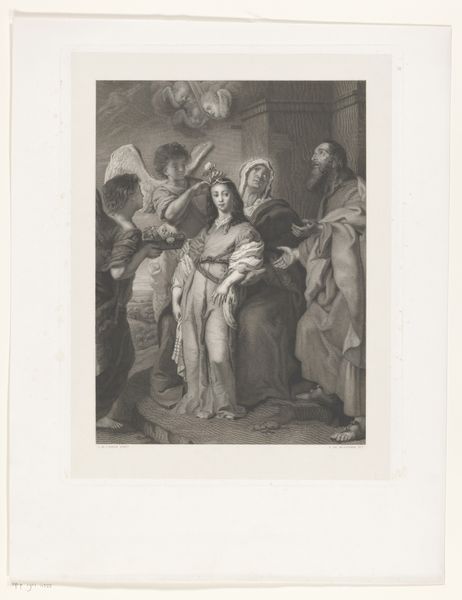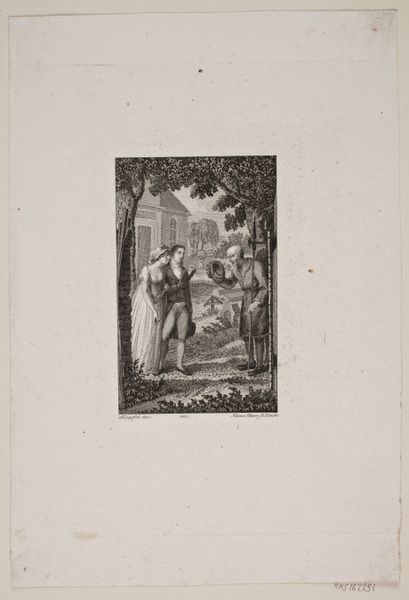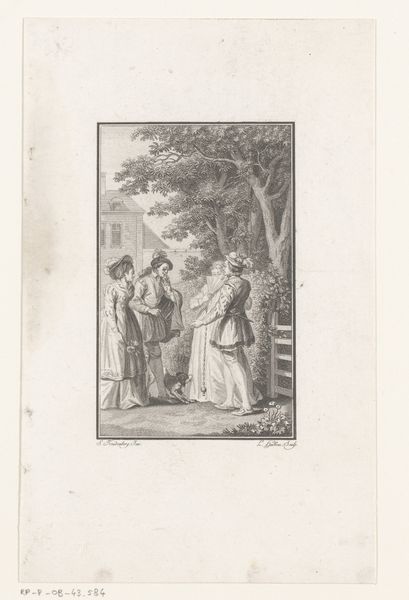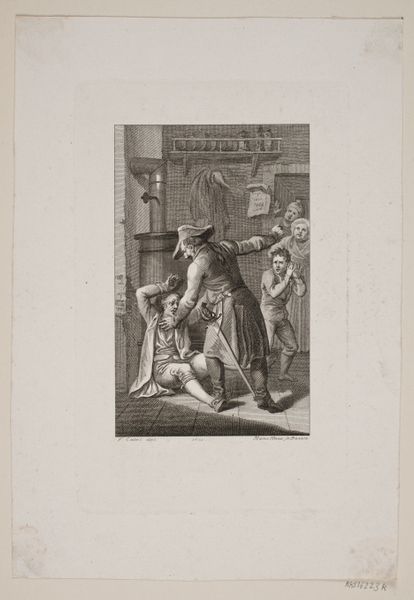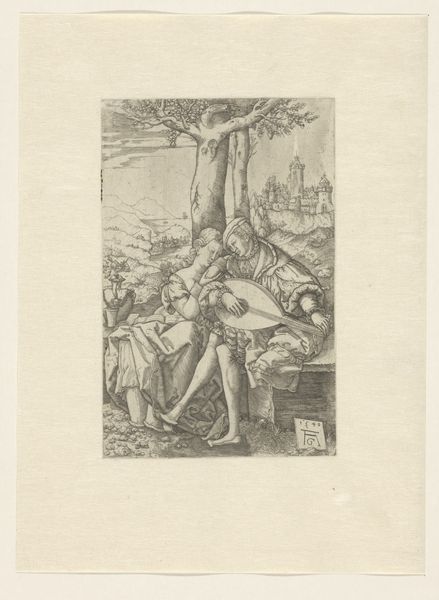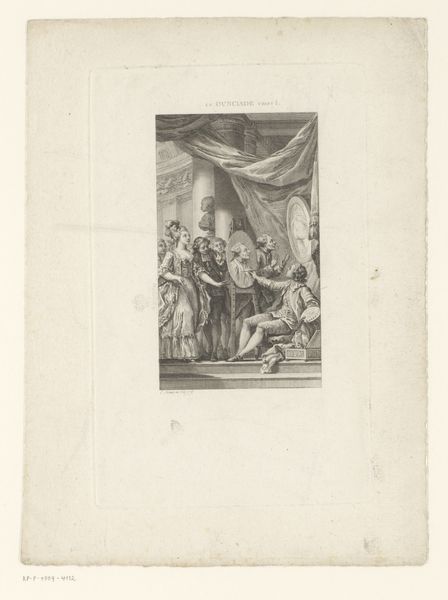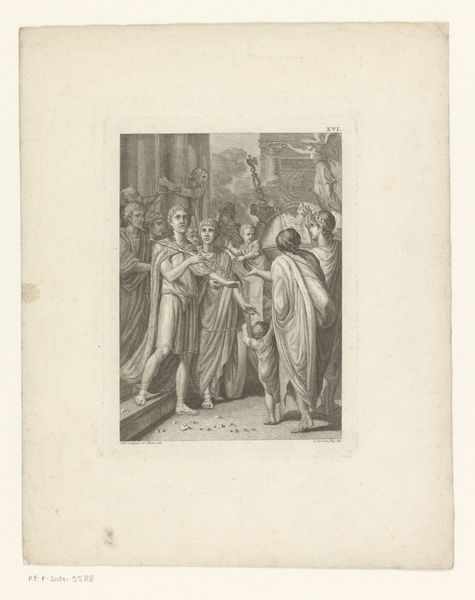
print, paper, engraving
#
neoclacissism
# print
#
old engraving style
#
figuration
#
paper
#
history-painting
#
engraving
Dimensions: height 185 mm, width 138 mm
Copyright: Rijks Museum: Open Domain
Tommaso Piroli created this print of Germanicus at a burning altar sometime before 1824, using etching and engraving techniques on paper. The stark contrast between light and shadow emphasizes the scene's solemnity. The artist would have carefully applied acid to the metal plate to create the recessed lines that hold ink, and then precisely cut lines with a burin, a handheld steel tool used to incise lines on the plate. Look closely at the textures - the flowing robes, the flickering flames, and the somber faces, all achieved through the precise control of line and tone. Printing was a means of democratizing images, making them accessible to a wider audience beyond the elite who could afford original paintings. The labor involved in producing such a print, from the initial drawing to the meticulous work on the plate, speaks to the value placed on craftsmanship. Ultimately, by understanding the labor and processes involved in creating this image, we gain a deeper appreciation for both its artistic merit and its historical significance.
Comments
No comments
Be the first to comment and join the conversation on the ultimate creative platform.
